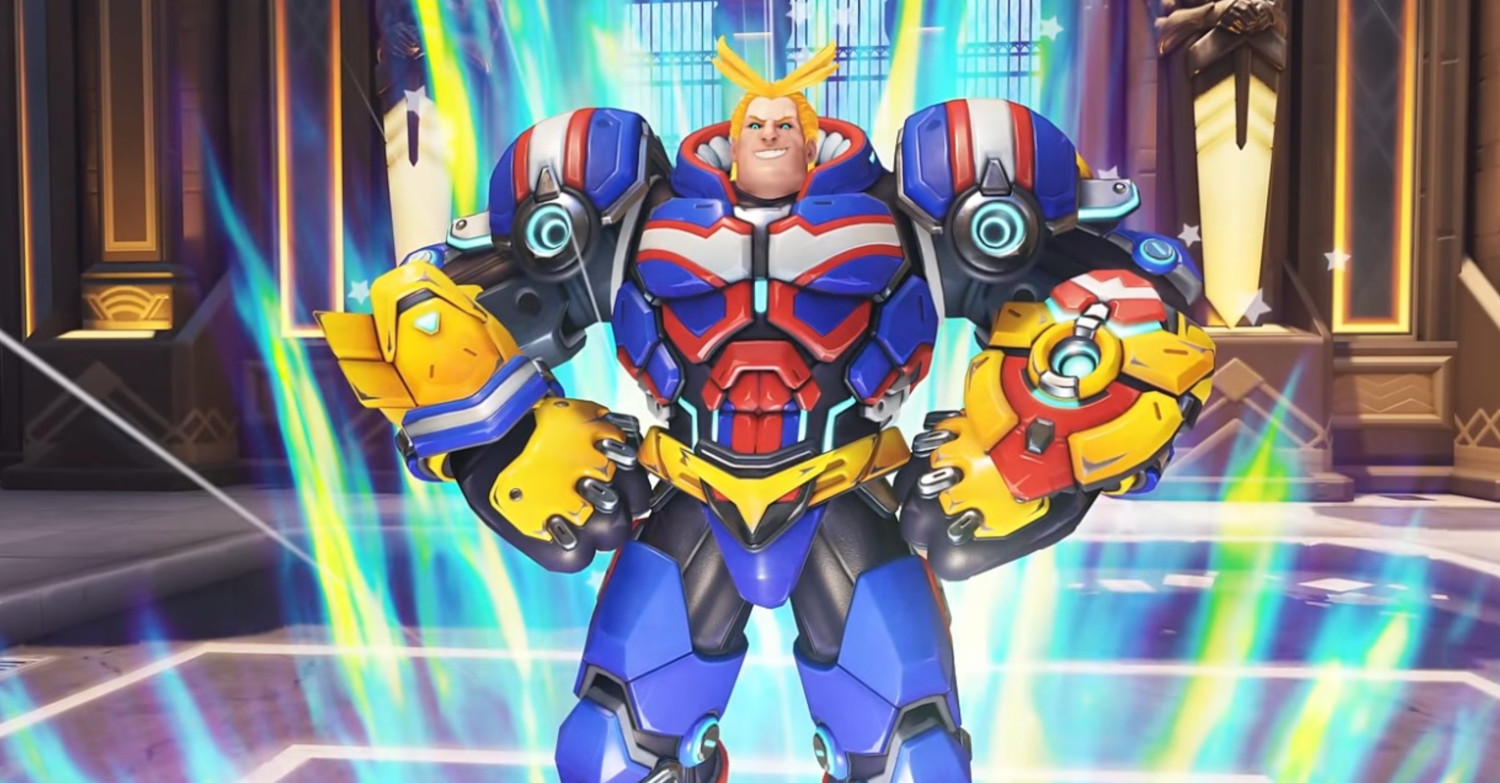Breaking Down Overwatch Ranking System: How It Works
Contents
- Breaking Down Overwatch Ranking System: How It Works
- Overwatch Ranking System Explained
- Matchmaking in Overwatch Ranking System
- Implementation of SR
- Overwatch 2 Rank Modes
- Order of Overwatch 2 Ranks
- What About Top 500?
- Modifiers for Overwatch 2 Ranks
- How Group Gameplay Functions in Overwatch Ranking System
- Overwatch Ranking System Rewards
- What Affects Your Ranking in Overwatch 2?
- What’s Worng with New Ranking System in Competitive OW2?
- Is Overwatch 2 Boost Worthwhile?
- Final Thoughts
- Frequently Asked Questions
KEY TAKEAWAYS
- Significant changes have been made to the Overwatch ranking system starting from season 9, providing a clearer and simpler advancement experience.
- Eight skill tiers comprise Overwatch 2’s rankings and correspond to each skill level, with five number divisions inside each skill tier.
- Eight rank modifiers provide a dynamic representation of your progression across the ranks of Overwatch 2, making sure that every game affects your overall status in a manner that’s appropriate for your performance and the circumstances of the match.

For players hoping to reach the highest tiers, such as Grandmaster or the esteemed Top 500, the Overwatch ranking system offers an organized route. Every season offers a fresh chance for skill development since the pursuit of better ranks reflects the competitive aspect of the game. Competitive Overwatch 2 accounted for nearly half (45%) of all hours played in Season 9, while Quick Play accounted for little under one-third of in-game time. This represents a substantial change from OW2’s more casual mode, which accounted for 40% of match hours, to competitive mode, which accounted for 35%.
Speaking of the competitive nature of Overwatch, only a few years after its initial release in 2016, the game quickly grew to become a highly competitive franchise in just a few days. It would eventually give rise to a well-known and flourishing eSports industry. It’s ideal for betting at e-sports bookmakers too because it has one of the liveliest and most varied eSports communities, along with a competitive season that lasts all year.
This comprehensive guide will cover the nuances of the rewards offered at each level, examine the several tiers inside the ranking system, and delve into how the Overwatch 2 ranks work. We’ll also talk about the latest modifications that have generated discussion in the community. Come along as we break down the intricacies of the Overwatch ranking system and provide you with the information you need to successfully dive into the competitive landscape of the 2022 multiplayer first-person shooters.
Recomended bookmakers
Overwatch Ranking System Explained
Significant changes have been made to the Overwatch ranking system starting from season 9 (season 13 is currently underway), which now provides a clearer and simpler advancement experience.
According to how they perform in the game, players are shown a clear visual representation of their advancement to the next rank following each match under the new system. Putting it simply, the system allows players to climb the ranks and prove their skills against others.
This updated method streamlines what was previously a more complicated procedure by making it simple for players to monitor their progress or failures within the rankings. But difficulties have also been brought to light by this clarity, with certain players experiencing a plateau at particular levels. As a player, you must advance through each of these rankings in the ranking system of OW2.
Matchmaking in Overwatch Ranking System
Your journey in Overwatch 2 starts with a sequence of placement matches meant to determine your starting Matchmaking Rating (MMR). Because it matches you with players of comparable skill levels in competitive matches, this rating based on numerical reflection of your skill, i.e. Skill Rating (SR)—which is kept unrevealed—is extremely important. We’ll go into details of that in a bit. Although the details of the scoring aren’t made public, Matchmaking Rating computations are based on player performance and game results, in contrast to the more open rank levels.
It should be around the same as your visible rank, but you’ll never know for sure. Your displayed Skill Rating rank and MMR aren’t always the same because the latter is a target that always moves. You must adjust to the meta with each patch in order to keep or raise your rank because the Matchmaking Rating system compares your skill to that of other players.
Blizzard is never able to provide your specific MMR value or explain how the system operates in order to prevent players from manipulating it to take advantage of it.
It’s also crucial to remember that taking time off from the game might cause your Matchmaking Rating to gradually decline, which affects the quality of teammates and opponents you face and guarantees that you are always paired in your competitive pool.
Implementation of SR
In OW2, your overall ranking is determined by a hidden criterion called your Skill Rating. Although the precise method used to determine SR is not made public, it considers a number of parameters, including:
- Your individual performance for each hero.
- Your record of wins or losses.
- The difference between your team’s strength and that of the enemy.
With the Skill Rating system, Blizzard hopes to establish equitable matches between players with comparable skill levels. You can move up the rankings as your SR rises if you continue to win games and perform well.
Rank modifiers, which give your growth more context, also have an impact on Skill Rating. These modifiers may show if you’re on a winning or losing streak, whether your rank is changing, or whether you’ve pulled off an unexpected victory over a team that was predicted to win. You can more accurately assess your rank changes and modify your gaming by being aware of these factors.
Overwatch 2 Rank Modes
As we said, season 9 of OW2 has seen a significant shift in rankings. After every match, a new system that tracks your rank advancement is introduced, along with new weapon skin awards.
Now, when a competitive match ends, a screen displaying your advancement to the next skill division appears. Unlike the old system, which hid that information until your rank update, Overwatch 2 players will be accustomed to seeing a number rise and fall with each encounter. The “modifiers”—which we’ll describe below—are the only things that can alter how much your rank progress increases or decreases.
Role Queue and Open Queue are the two primary ranked modes in OW2. To gain entry to and play both ranked modes, you must either have owned Overwatch 1 or have completed 50 Quick Play games in Overwatch 2.
- Role Queue: Your team’s composition is locked to one tank hero, two damage heroes, and two support heroes by the mode. You choose the roles you wish to queue for, participate in matches, and receive a rank specific to each role.
- Open Queue: Like the 2016 original Overwatch, this mode is free-for-all. You get one global rating and can choose any hero in any capacity.
In contrast to earlier competitive seasons of OW2, you won’t have to play games to get a rank again. Rather, you must finish 10 placement matches annually for every role. Based on your performance during each match, the game will predict your final rank.
From then, anytime you fill the bar up to your next skill division—or, if you’re having trouble, when it dips down to the previous skill division—your rank will be updated.
Order of Overwatch 2 Ranks
From Bronze to the elite Top 500, the Overwatch ranking system is divided into multiple tiers. The majority of players are grouped around Silver, Gold, and Platinum, each of which denotes a different skill level. Because of their high player concentration, these common tiers provide the fastest matchmaking, but they also provide a serious obstacle to advancement.
Representing an exclusive bunch of 500 players in the game, the Top 500 is more of a distinguished accolade than a ranking. Players who engage in professional Overwatch competitions are frequently found there, and it serves more as a leaderboard, showcasing the best of competitive performance.
Individual performance and recently added rank modifiers (don’t worry, we’ll get to that), which modify the rate at which players can advance or descend the ranks, have a direct impact on rank advancement in OW2. Players’ existing level of proficiency and competitive acumen are reflected in their ranks thanks to this system.
In Overwatch 2’s competitive game modes, you’ll observe notable shifts in player behavior and gameplay as you advance through the ranks. These modes highlight how balancing changes affect team battles and are made to be simple and easy to use. As you move up the ranks, the confrontations get more intense and the strategic depth increases, indicating that there are other modes for players to queue in, each with its own ranking system.
In summary, the eight medals that make up OW2’s rankings correspond to each skill level, with Champion at the top. There are five number divisions inside each skill tier, and they go up until you reach the next highest tier. Therefore, you’ll begin at Platinum 5 if you’re Gold 1 and advance in rank.
You can pick up the following ranks in Overwatch 2:
- Bronze 5-1
- Silver 5-1
Bronze and Silver are lower ranks, and players frequently choose their favorite heroes here without giving team composition or tactics any thought. Mechanical skills are still being developed, and communication is limited. Players in these levels may prioritize their individual success over teamwork, making matches feel more chaotic and unstructured.
- Gold 5-1
With both recreational and competitive players, Gold is the most populated rank. Mastering their “main” heroes takes up a lot of players’ time, sometimes at the expense of team adaptability. Although more structured team compositions and fundamental tactics may begin to appear at this rank, inconsistent communication and skill levels can still result in unpredictable games.
- Platinum 5-1
A move toward more strategic gaming is indicated by Platinum. Gamers begin to coordinate ultimate abilities, communicate clearly, and adjust to various team configurations and maps. At this level, it becomes more crucial than ever to have a diverse pool of heroes and be able to alter roles according to the demands of the squad.
- Diamond 5-1
- Master 5-1 (Top 500 roughly starts here)
- Grandmaster 5-1
- Champion 5-1
The game gets really competitive at Diamond and beyond. Players possess strong mechanical abilities, a thorough knowledge of the meta, and the capacity for prompt, well-informed decision-making. At high levels, cooperation and communication are essential since players frequently employ sophisticated tactics and coordinate their movements to outscore rivals. The most talented and committed players who have grasped the nuances of the game can be found in the highest ranks, including Top 500, Grandmaster, and Champion.
What About Top 500?
The Top 500 leaderboards and distinctive rank badges will be released two weeks into each season. Additionally, they’ll be accessible to play on the same day if there’s a new hero for the season.
The top 500 participants are arranged by role and by combined role category, creating a dynamic scoreboard. Under the competitive card on the main menu, you may see the standings.
Technically, you don’t have to be a specific rank to appear on the Top 500 leaderboard. The top-ranked OW2 players are shown in this snapshot, which changes as players win and lose. It’s likely that other players are going to knock you out of the Top 500 very fast if you barely make it. Because it’s volatile, expect ranks to fluctuate every day.
To qualify for the Top 500, you must play and win 25 matches in either the Open Queue or the Role Queue. Master, Grandmaster, and Champion players will make up the majority of the Top 500 since it actually only includes the top 500 players out of what’s likely hundreds or perhaps millions of players overall.
In the event that you’re a little rusty, your MMR, also known as your invisible rank, will be dropped if you take a long pause from playing. When you get back, Blizzard promises your Matchmaking Rating will adjust more rapidly than usual to get you back on track.
Modifiers for Overwatch 2 Ranks
In OW2, many variables that represent both how you performed recently, and certain match circumstances, affect how you advance through the rankings.
You’ll see a rank information screen that displays your advancement to the next skill division following each competitive match. A proportion of your progress, either earned or lost, will be displayed on the bar. Depending on a variety of criteria, modifiers make adjustments to your progress.
Here’s how these elements, i.e., modifiers are involved:
- Win Streak: If you win several games in a row, it speeds up your advancement.
- Loss Streak: If you lose multiple games in a row, your rank will drop more quickly.
- Uphill Battle: Provides you with greater rewards for triumphing in difficult situations.
- Calibration: It applies when determining your rank for the first time.
- Volatile: Modifies your ranking if your performance after calibration is erratic.
- Reversal: If you lose a game that you were supposed to win, your rank is penalized.
- Demotion Protection: Prevents you from being demoted in your rank when you’re about to be demoted.
- Expected: The typical advancement for winning a game that you were supposed to win.
By providing a dynamic representation of your progression across the ranks of Overwatch 2, these rank modifiers make sure that every game affects your overall status in a manner that’s appropriate for your performance and the circumstances of the match. This method offers a thorough overview of your achievements and failures, customized not just for standard gameplay but also for the part you play.
How Group Gameplay Functions in Overwatch Ranking System
There are certain restrictions on group play in OW2’s competitive modes. As long as they aren’t at the extremes of the rank spectrum, most players can form groups with almost anybody. However, there are very stringent rules that top players must follow.
The regulations are stated below, but be sure to note the distinction between a skill category and a rank. High-ranked players must be aware of the distinct skill divisions (e.g. Master 3 or Grandmaster 1), however, most players can play with anyone up to two entire ranks above or below them.
As of season 10, such regulations are relaxed.
- Bronze, Silver, Gold, Platinum, and Diamond players: Anyone within 2 ranks.
- Master players: Anyone within 1 rank.
- Grandmaster players: Anyone within 3 skill divisions.
- Champion players: One player within 3 skill divisions.
Overwatch Ranking System Rewards
In addition to giving players a competitive advantage, the Overwatch ranking system delivers material benefits. Players can now earn Competitive Points (CP) from every competitive match, thanks to a new system that was introduced in Season 9. You can still purchase golden weapon skins with Legacy Competitive Points, which have been converted from any CP you earned prior to season 9.
With every win, draw, or loss in 2024, Competitive Points are accrued; a win earns 10 CP, a draw earns 5 Competitive Points, and a loss earns no CPs. Players can access the restricted Jade weapon skins presently accessible with 2024 Competitive Points by using the CP they’ve accrued. Jade weapon skins will cost 3,000 Competitive Points in 2024. Additionally, golden weapon skins are 3,000 Legacy CP in price. Notably, Blizzard has stated that in the near future, you’ll be able to purchase golden weapons with 2024 Competitive Points.
They no longer need you to finish a challenge, but competitive titles like “Platinum Role Challenger” are still awarded at the conclusion of a season so you can utilize it for the next one.
Unused 2024 CP turns into Legacy Competitive Points at the end of the year, which may be spent for upcoming special products, and new incentives are added every season. Players are rewarded for their competitive prowess in the Overwatch ranking system, as well as for their involvement.
You no longer receive the CP that was formerly awarded to you at the conclusion of each season according to your rank. Your “Competitive Progression” meter for bonus Competitive Points now rises with each match.
You gain three progress points for victories. You only gain one point for wins and losses.
What Affects Your Ranking in Overwatch 2?
Comprehending your OW2 rank advancement requires an understandable approach that assesses both the basic configuration of the game and your performance. It may have little effect on your rank if you defeat a more powerful squad when the odds aren’t in your favor, but it can greatly raise your rank if you’re anticipated to win according to team strength and you do win.
You can see how the dynamics of the match, such as team makeup and overall performance, affect your individual ranking changes thanks to the system’s openness. This strategy makes it clearer how crucial each match’s result is to Overwatch 2’s competitive structure and guarantees that players are aware of how wins and losses affect their overall rank advancement.
What’s Worng with New Ranking System in Competitive OW2?
Overwatch 2 gamers’ primary grievance is that they believe win streaks don’t provide them with enough gain. Some members of the game’s Steam community claim that the matches feel extremely uneven because occasionally they are unaware of their rank. According to their claims, they are occasionally placed in matches that seem to be at least one skill level below or above them, and the game informed them that they weren’t meant to lose that particular match when they lost.
Next, there’s a lack of openness. Most games have a bar that rises when you win and falls when you lose. This is meant to indicate how close you are to moving up in the rankings, or to let you know that you can bid your Gold rank farewell if you lose your next game. Even if the original Overwatch had its issues, at least you could see your rank rise or fall after each match.
However, the main problem with competitive mode isn’t ambiguous rankings; rather, it’s uncompetitive play that leads to one-sided defeats more than 70% of the time. Some of the most popular Overwatch YouTubers have voiced their displeasure with uncompetitive matchmaking.
Members of the game developer’s forum lament that OW2’s ranking system is the most demotivating of any competitive game ever. The issue is that your individual contributions to the game aren’t recognized by the new ranking system. Everything is predicated solely on wins or losses. For instance, your team makes every effort yet is unsuccessful. A loss modifier emerges if you lose the subsequent game. The game will attempt to pair you with inferior opponents, so you can move down indefinitely. Then you’ll triumph, and then you’ll tumble down again. Win streaks are no different. You’ll only gain or lose 20 rating points even if you have 50 kills and the Play of the Game (PotG). How much you contributed to the game is really irrelevant. The system only cares about the outcome; it doesn’t care about your skill. Although the algorithm may occasionally consider your performance and provide an extra 1-4%, this group of gamers thinks these figures are generally absurd.
So, as we are nearing the end of the article after we explained everything there is in regard to the Overwatch ranking system, why not list some general pros and cons of it:
| PROS | CONS |
| Players have the chance to climb the ranks and prove their skills against others. | Win streaks don’t provide players with enough gain. |
| Establishing equitable matches between players with comparable skill levels. | Lack of openness in the sense of not clearly seeing rank rise or fall. |
| As you move up the ranks, the battles get more intense and the strategic depth increases. | Uncompetitive play leading to one-sided defeats in most cases. |
| Every season offers a fresh chance for development and skill improvement. | Individual skills and contributions to the game aren’t valued that much, but only the result. |
Is Overwatch 2 Boost Worthwhile?
Although moving up the rankings in Overwatch 2 requires talent and dedication, there are a number of obstacles that might make the process seem overwhelming at times. For players who feel trapped or poorly positioned because of things like unreliable teammates or poor matching, OW2 boosting service/coach can be a useful tool.
In order to raise your ranking to a division that more closely matches your actual skill level and enables you to participate in more competitive and balanced matches, boosting services often only work with Top 500 boosters. You can improve your overall gaming experience and concentrate on honing your skills in a suitable competitive environment by reaching a rank that accurately represents your ability.
But boosting is also bad, as many players think. It ruins the fun and it spoils the game. Before the Overwatch League (OWL), which is now known as the Overwatch Champions Series (OWCS), boost costs were often low. Prices go up when the Overwatch League launches. Making it to the Masters would seem to result in a decline shortly, but this isn’t always the case.
However, this makes a lot of gamers think. Given how simple it is to get away with using this service without encountering any issues, is this fair? Naturally, lower SR levels that are promoted to Master will most likely decline, but there isn’t much of a difference between mid- to high Diamond and Masters. However, many people wrongly make use of boosting services.
Supporters of the service claim that boosting is about readjusting your gaming environment so you can compete at the highest level possible, learn more efficiently, and enjoy every match more. It’s not simply about rapidly moving up the ranks. Professional boosting services offer the customized solution you need, whether your goal is to temporarily get around difficulties or you need help getting to a rank that matches your skill level. So, let anyone enjoy it if they believe it’s fair…
Final Thoughts
This was about all we could share with you about the Overwatch ranking system or the intricacies of competitive play. With the new competitive prizes, you may show off to your opponents, and perhaps the competitive overhaul has helped you move up the competitive ladder to where you deserve to be.






